For centuries, Dong Ho paintings were used as precious decorations to celebrate the Tet festival. People bought the paintings to hang on their walls for a year, which are then replaced with new ones for the next New Year.
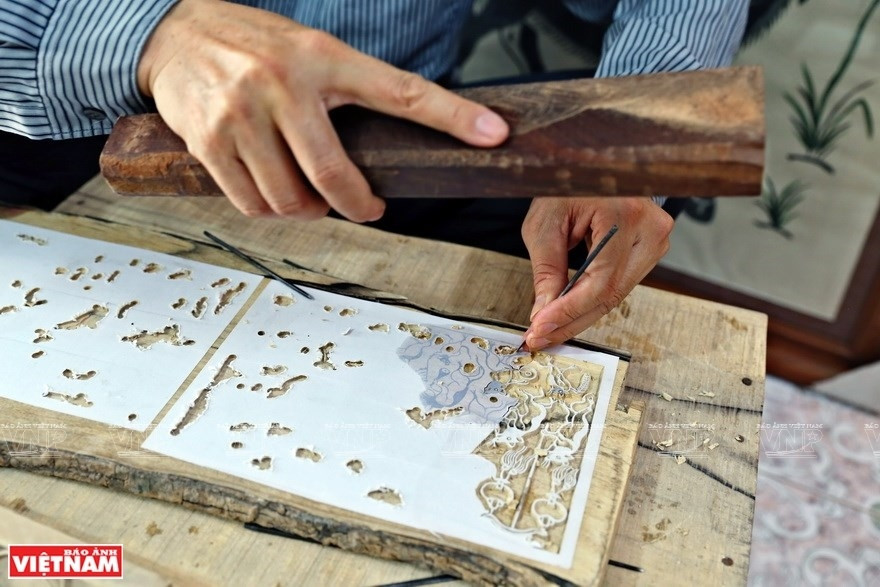
Dong Ho painting or Dong Ho folk woodcut painting is a genre of Vietnamese folk painting, stemming from Dong Ho village, Song Ho commune, Thuan Thanh district, Bac Ninh province in the 17th century. Dong Ho painting was inscribed in the list of national intangible cultural heritage in December 2012
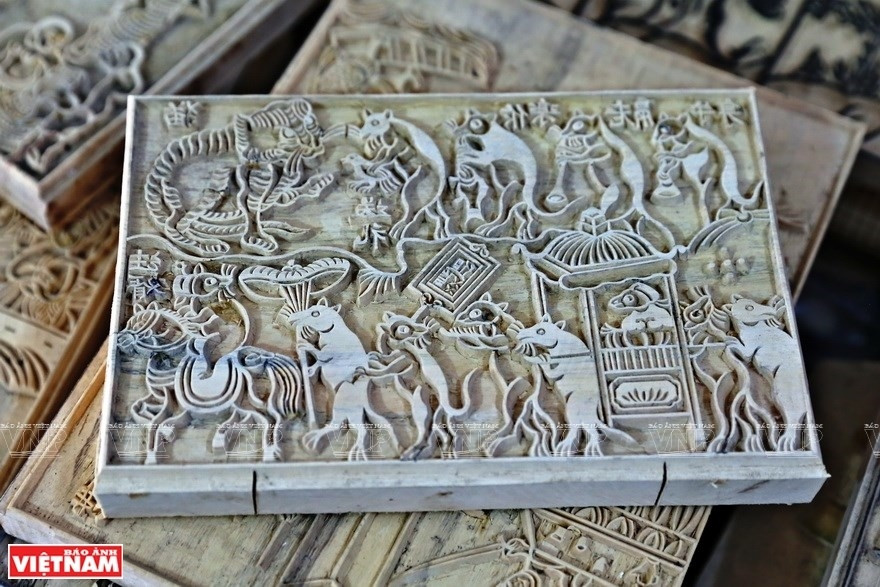
Dong Ho painting is special because it is printed by hand entirely from woodblocks. Each painting has one woodblock for the outline and several others for printing a color. The number of the woodcuts corresponds to the number of colours a painting has. The colours of paint are processed from natural materials Vietnam. The woodblocks are engraved by hand and can be kept for many years. In the photo: A woodblock for the “Rat’s Wedding” painting
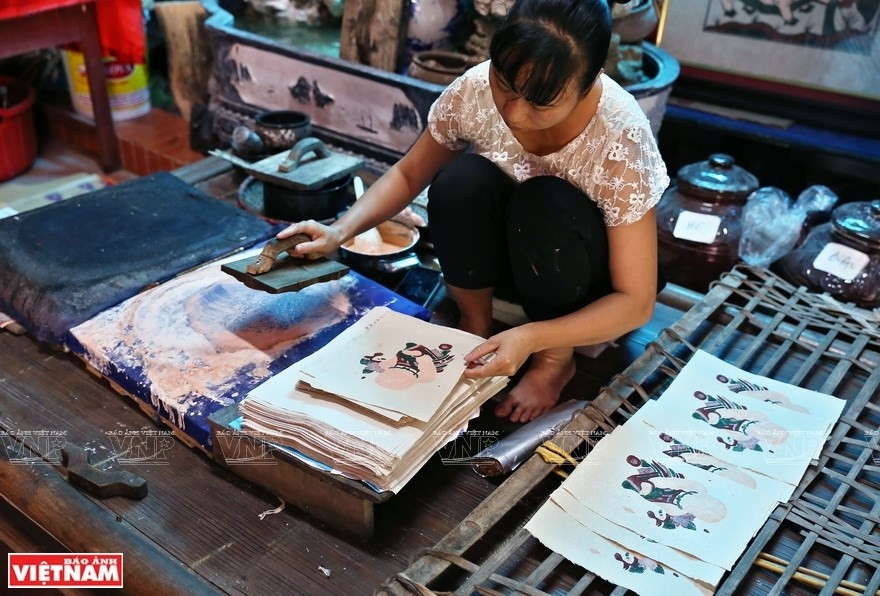
Artisans must use many woodblocks to create a Dong Ho painting
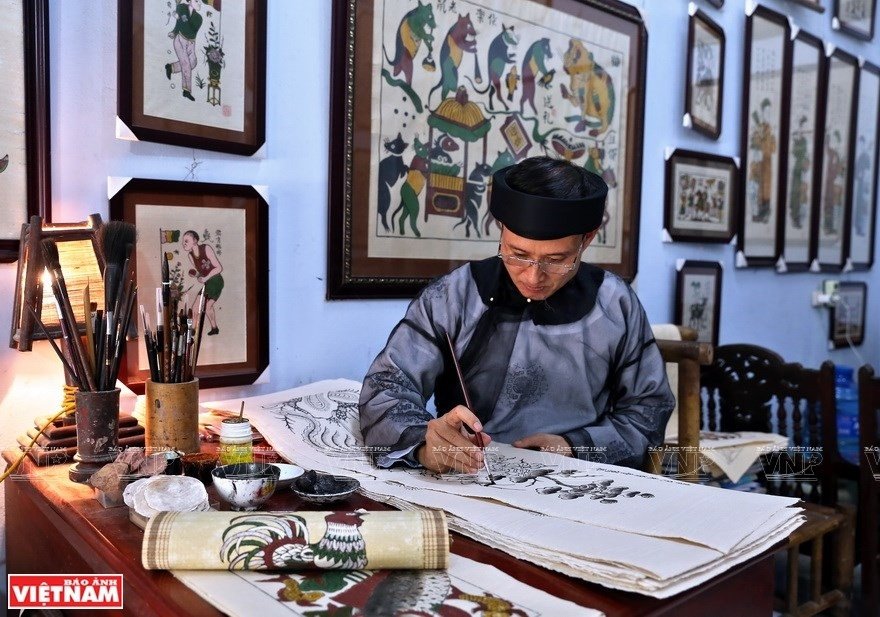
An artisan finalizes a painting with his hand drawing after it is printed
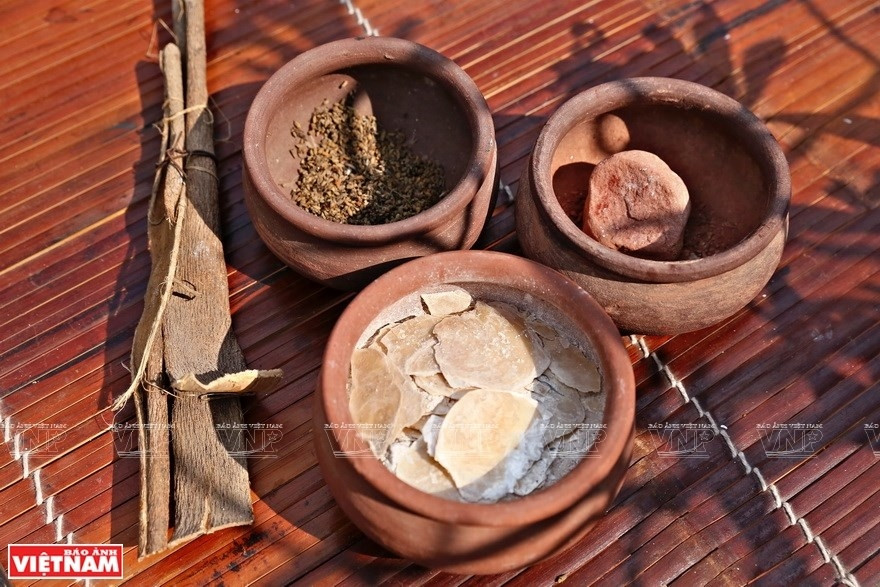
The colours used for printing Dong Ho paintings are made from natural materials
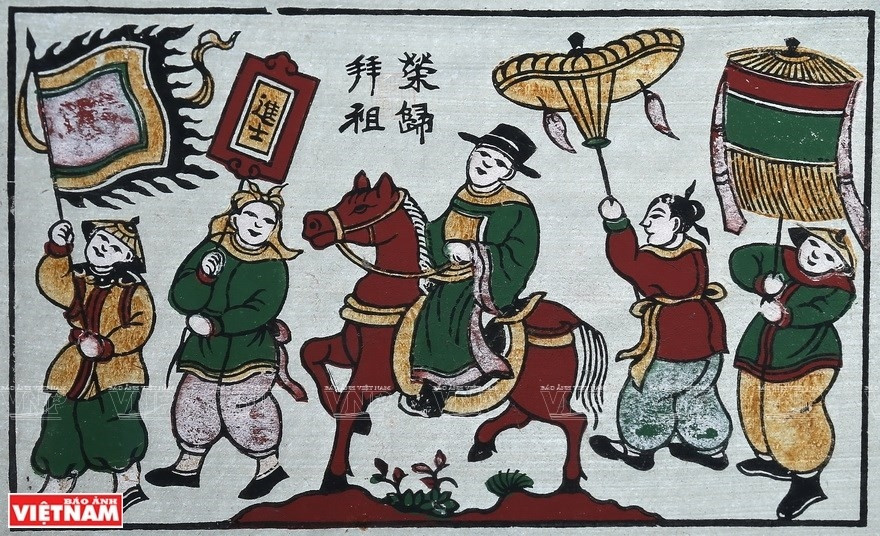
“Vinh quy bai to” (Returning home to pay tribute to ancestors after achieving academic honours) is a main genre of Dong Ho painting
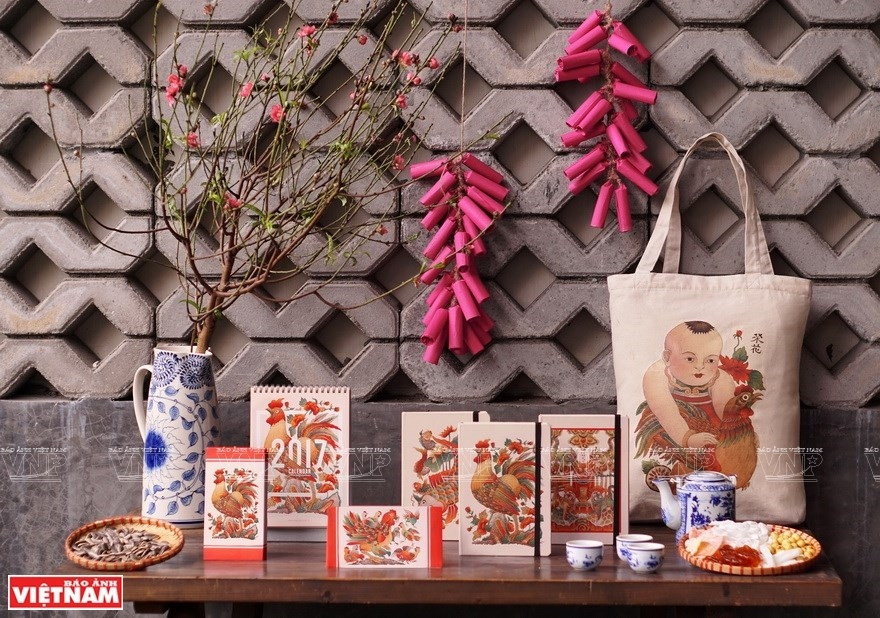
Decorative objects are created with Dong Ho painting patterns
VNA